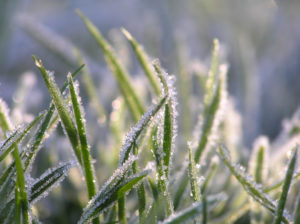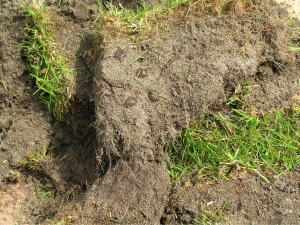Autumn brings with it plenty of changes for golf course superintendents and turfgrass crews. With fewer rounds and more favorable growing conditions, the focus shifts from playability and maintenance to winter preparedness.
While “to-do” list items for winterizing your course depend on the species of turfgrass on your course, many of the practices listed below are still good precautionary measures to take if you experience lower temperatures during the winter months.
Evaluate Turf Sunlight Exposure
 Adequate sunlight exposure allows grass plants to achieve the desired rate of respiration, photosynthesis, and plant growth. When exposure is compromised, grass plants become significantly weakened, resulting in a depleted root system and lower energy reserves. In turn, this less than optimal condition makes it more difficult for the plant to recover from winter injury. With shorter days during the winter months, sunlight is already limited. Consider thinning canopies or removing trees that are shading areas of your turf to correct unsuitable lighting conditions. Tree removal can also improve air movement, resulting in a lowered risk of disease on your turf.
Adequate sunlight exposure allows grass plants to achieve the desired rate of respiration, photosynthesis, and plant growth. When exposure is compromised, grass plants become significantly weakened, resulting in a depleted root system and lower energy reserves. In turn, this less than optimal condition makes it more difficult for the plant to recover from winter injury. With shorter days during the winter months, sunlight is already limited. Consider thinning canopies or removing trees that are shading areas of your turf to correct unsuitable lighting conditions. Tree removal can also improve air movement, resulting in a lowered risk of disease on your turf.
Practice Deep Aerification
Aerification is a good practice to relieve any compaction in the turf’s soil from season foot traffic, heavy equipment or accumulations of excessive thatch. Practicing aerification in the fall when overall turf stress is low, allows for a quicker recovery. Pairing this process with a soil surfactant application can help speed the recovery time even more.
 Apply an Anti-Transpirant
Apply an Anti-Transpirant
The cold, drying winds of winter months can be damaging to exposed turf and plants, robbing them of essential leaf moisture that they need to survive. An application of LeafShield to your turf limits the amount of moisture that escapes through stomatal pores, preventing foliar water loss and improving the plant’s tolerance to stressful conditions. Warm season turf grown in the transition zone and mid-south can be especially susceptible to winter desiccation.
Overseed in Combination with a Soil Surfactant
A good overseeding program can be key for fall and winter play, as well as determining the quality of your turf for the upcoming season. When turf is mowed closely prior to seeding, it can cause significant dry down. While important for getting good seed-soil contact, this practice increases the effect of water repellency at and below the soil surface. This heightened repellency can make it difficult for seedlings to establish properly and can lead to wasted water and grass seed. A proven soil surfactant like Dispatch or Primer Select will overcome water repellency, enhance water infiltration, and ensure that applied water wets the soil and seed evenly for faster, more uniform turf germination. For best results, soil surfactants should be applied two weeks before seeding to prepare the soil and three to four weeks after stand establishment to ensure continued soil moisture uniformity.
 Monitor Soil Moisture
Monitor Soil Moisture
It is important to monitor the soil moisture of your greens before and after closing up for the season to ensure a healthy return of your turf for the Spring. Keeping a record of these levels can also help you compare winter injury in the Spring and allow you to start building a site history. This is particularly important for areas growing warm season grasses on greens in the transition zone. Don’t be afraid to continue to apply products like Revolution on warm season greens all winter long.
Use Covers Where Necessary
While winter protective covers can be costly, they can be very efficient where conditions are tough and more vulnerable to winter stresses. The most effective covering material used will vary depending on the expected stress factor of your turf. If low temperatures are causing winter injury, insulation materials must be used along with a permeable cover. On the other hand, if ice damage or melting water is the issue, an impermeable tarp will allow the soil pores to stay filled with sufficient air to prevent suffocation.
Though there is no way to control what the winter season has in store for your turf, you can prepare. To learn about more ways that you can protect your turf from winter injury read: The Role of Wetting Agents in Autumn and Winter .


Comments are closed.